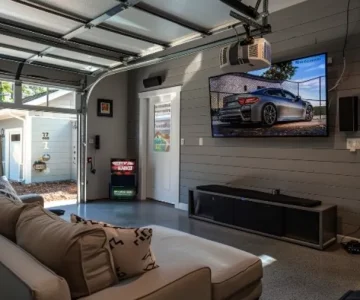Smart home technology has moved from futuristic fantasy to everyday reality. With the right setup, your home can become a connected space where devices work together to make life more convenient, comfortable, and secure.
What Exactly Is a Smart Home?
A smart home uses internet-connected devices that can be monitored, automated, and controlled remotely. These systems can range from single gadgets—like smart plugs or bulbs—to fully integrated setups where lights, heating, security, and appliances all communicate with each other through a central hub or app.
From adjusting your thermostat while at the office to checking who’s at your front door from halfway across the world, smart homes give you control wherever you are. They’re designed to save time, cut down on energy use, and provide peace of mind.
Why People Are Embracing Smart Homes
The main appeal is convenience. Imagine lights that switch on when you arrive, heating that adjusts automatically depending on the time of day, or blinds that close at sunset without you lifting a finger.
Another major benefit is energy efficiency. Smart thermostats, lighting, and appliances can help lower utility bills by reducing unnecessary consumption. And for security, the ability to monitor your property remotely—through cameras, motion sensors, or smart locks—offers reassurance whether you’re at work or away on holiday.
While some people associate smart homes with luxury, the real foundation is practicality. Even basic setups can make daily routines easier, while adding high-end devices can enhance comfort and style.
What Does It Cost?
Prices vary depending on how advanced you want your system to be. You can start small with affordable single devices or invest in a fully connected ecosystem. Although the initial spend can be significant, many homeowners find that the energy savings, convenience, and added property value make it worthwhile.
Essential Components for a Smart Home
At the heart of a smart home is a central control system—often a hub or simply your Wi-Fi network—through which devices communicate. Once that’s in place, you can add:
- Smart heating and cooling: Thermostats and radiator controls that adapt to your schedule and track energy usage.
- Lighting systems: From single bulbs to integrated setups that adjust brightness or colour based on time of day or activity.
- Smart security: Doorbell cameras, smart locks, motion detectors, and alarms that can be managed remotely.
- Kitchen tech: Appliances like ovens, fridges, and coffee machines that can be programmed or operated from your phone.
- Curtains and blinds: Automated to let in or block out sunlight as needed.
- Garden and plant care: Irrigation systems that water only when necessary.
- Safety monitors: Smoke, carbon monoxide, and environmental sensors for temperature, humidity, or air quality.
- Voice assistants: Devices like Amazon Echo or Google Home that allow you to control your home using simple commands.
Potential Downsides to Consider
Before diving in, it’s worth thinking about the challenges:
- Data security: More connected devices mean more potential entry points for hackers. Securing your network is essential.
- Costs: High-end systems and ongoing maintenance can add up quickly.
- Technical hiccups: A system failure could temporarily affect heating, lighting, or security. Reliable installation and backup options are key.
Finding the Right Professional for the Job
If you’re building or upgrading to a smart home, choosing the right contractor is crucial. Look for someone with proven experience in smart home projects and ask for references. Make sure they understand your vision, budget, and timeline, and that they’re properly licensed and insured. Most importantly, choose someone you feel confident working with—trust goes a long way in ensuring a smooth process.
Final Thoughts
Smart homes aren’t just about flashy gadgets—they’re about creating a living space that works with you, not against you. Whether you start with a few key devices or go all-in on a fully automated system, the result can be a home that’s more efficient, secure, and tailored to your lifestyle.





